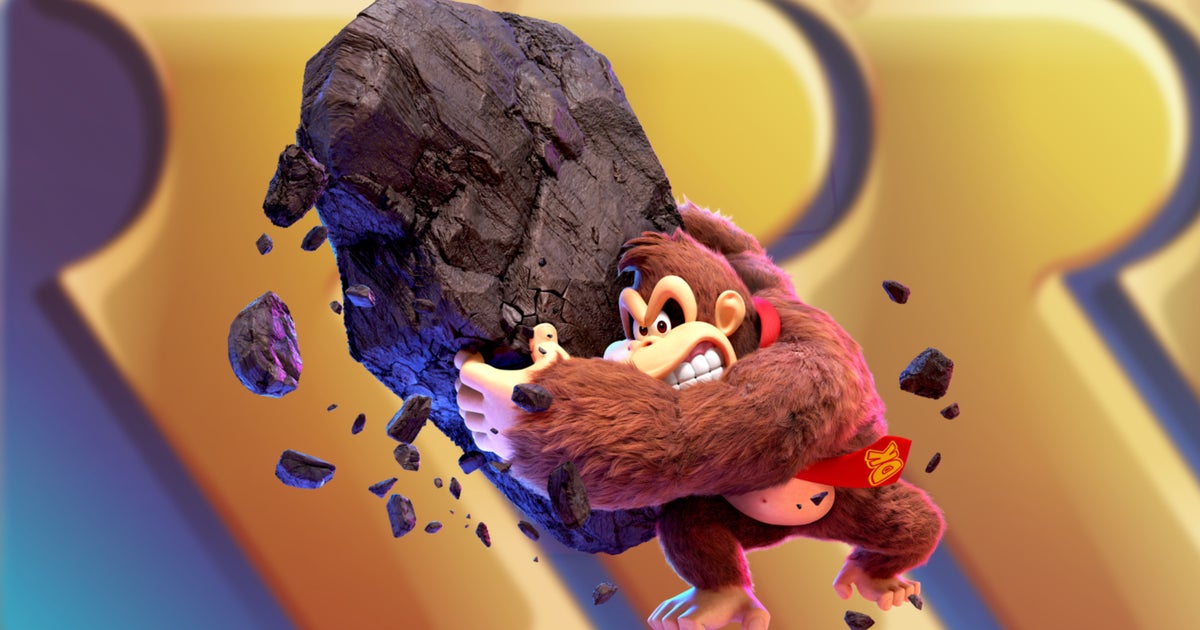Nintendo has a silly new tradition. Pre-release, it doesn’t actually talk about who makes its games. This is part of an overall Nintendo-wide strategy about focusing on the experiences rather than the people. So while it might be exciting to learn that the studio behind Super Mario Odyssey is behind Donkey Kong’s latest outing, we don’t actually know if it is. But it sure looks like it.
The biggest surprise for me when playing Donkey Kong Bananza for a half hour at the world’s first Nintendo Switch 2 hands-on is just how Odyssey it is. The core mechanic is the same – but structurally, this is just like Mario’s barn-storming Switch adventure.
This makes it a rare Nintendo game – pun unintended – because it’s really quite uncommon to see Nintendo take a formula that’s worked for one franchise and directly transplant it to another. A transplant has clearly taken place here, however – and the simian patient is healthy, indeed.
What I mean by this, to be clear, is that larger-scale objectives of 3D platformers are left aside in favor of large open zones packed with smaller objectives. These take a variety of forms and vary: I saw combat encounters, brain-teasing puzzles, and straight-up platforming challenges. Some of your objectives are simply cleverly hidden. Odyssey’s Moons are replaced with glistening golden bananas; but this feels like Odyssey.
The core mechanic has been replaced, of course. Gone is cappy, replaced by wanton destruction. For people of a certain advanced age that remember the Xbox 360 well, I can describe this game as Red Faction Gorilla: it’s all that deforming tech we saw years ago, where you can smash probably 90% of any of the level geometry you can see into dust. Dig up, dig down. Pummel through mountains. Rip giant chunks out of the ground and then use gyro controls to aim where to throw it in order to knock a high-flying enemy out of the sky.
It fits DK well, and there’s a very Nintendo-like cadence to the destruction where it absolutely doesn’t feel like DK is smashing stuff up because he’s angry. There are baddies in his way, obviously, but DK is flattening these levels because it’s fun. He grins the whole time.
The section of the game we play is pretty obtuse, but it looked to me from some menu hints and the like that DK will basically be working his way down, stage-to-stage, deeper and deeper into a mine. An indicator appears showing what ‘floor’ I’m on, anyway. The destruction is key to each floor, which is why you’re given a really snazzy 3D map that sort of reminds me of the ones from the Metroid Prime games. You can tilt, zoom, and orient this 3D map to see where you are in great detail – which is ideal when you might smash your way into the middle of a mountain and become quite confused about where exactly you are.
Nintendo actively encouraged us to play the time-limited demo of Banaza more than once, noting it was a game with much to discover. It’s true. Like Odyssey, you can just sort of meander off in a stage and lose yourself. You might see what is obviously a Banana, then be left scratching your head as to how to reach it. You can bash your head against that wall for a while, or simply walk away – for another discovery is inevitably just around the corner.
In a sense, the structural similarities to Odyssey make Bananza a strangely known quantity. Here we have Nintendo’s two big flagship games for the launch window of Switch 2, and here we have Mario Kart (which, open world or not, is still very much Mario Kart), and a DK game that despite being the first true 3D DK platformer in almost 25 years, is vastly familiar.
But, like the Switch 2 hardware’s gentle iteration, perhaps the wheel didn’t need to be reinvented. Mario Odyssey was great; its bite-sized structure made it an absolute slam dunk with even the youngest kids, as friends with weans of the appropriate age have attested to me. Perhaps this is a formula that should be ported – and perhaps the inherent differences in the characters of Mario & DK, with their vastly different skill sets, will be enough to differentiate. It works.
And with all that, there is one more thing to say – there is a manner in which this doesn’t quite resemble Odyssey. That’s in a simple note: the spirit of Rare is in this. Clearly, this is almost certainly a DK title made in Japan. But whoever is behind this has stepped back and looked holistically at what Rare built in the 90s and Retro Studios later expanded on. There’s something about the look and feel of the game, googly eyes and all, that feels like a marriage of Rare’s DK and Nintendo EPD’s vision of modern 3D Mario.
